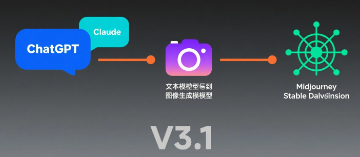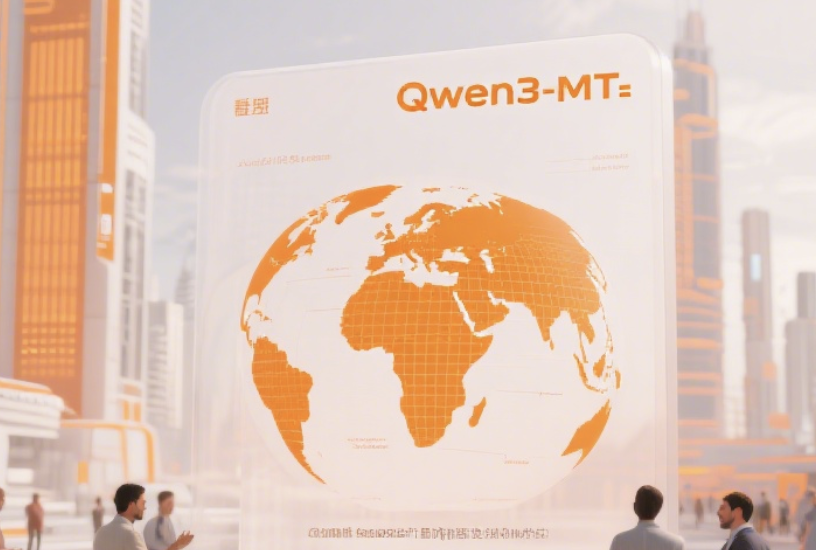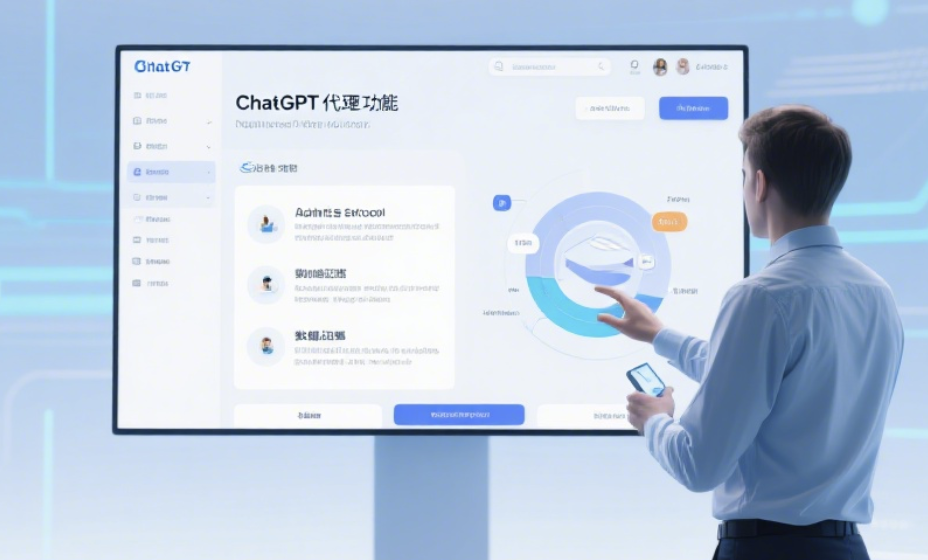DeepSeek-V3.1 Released: Hybrid Reasoning and Stronger Agents, the first step towards the era of AI agents. AI and large models have entered the agency racing period. DeepSeek-V3.1 is launched with hybrid reasoning mode and stronger agent skills, supporting both thinking and non-thinking paths, and one-click switching with the DeepThink button. Ecological collaboration around AI, artificial intelligence, ChatGPT and other ecosystems can take into account speed, cost and stability in automation and intelligent applications.
1. Version highlights and positioning
1. Hybrid reasoning: one model, two modes
The core of AI and artificial intelligence lies in reasoning autonomy. DeepSeek-V3.1 realizes the automatic trade-off between different tasks of AI tools through thinking and non-thinking modes: the non-thinking mode is suitable for general conversations, summarization, and structured generation, and the thinking mode is suitable for multi-step planning, mathematical logic, and complex tool chains. DeepThink buttons make switching more straightforward, making it easy to quickly test products and projects.
2. Think faster: shorten the path from question to answer
AI tools need to find a balance between speed and quality. Compared with DeepSeek-R1-0528, V3.1-Think emphasizes faster thinking convergence and shorter chain reasoning, taking into account machine learning robustness and explainability. For the automation application of large models, this means lower latency and a more controllable cost curve.
3. Stronger agent skills: The key to multi-tool and multi-step
AI agents is to call the tool correctly. V3.1 strengthens function calling, knowledge retrieval and multi-step execution in post-training, which is particularly effective for daily automation, front-end and back-end linkage and report production. Combined with the ChatGPT ecosystem, Claude's long-form understanding and tool tables, and in-enterprise RPA, stable intelligent agents can be built.
(1) Why it is worth switching and piloting
nowa. Hybrid inference can unify the model stack and reduce multi-model orchestration
b. Automated agents are more stable and function calls are more accurate
c. Products can be visualized A/B through the DeepThink button, lowering the integration threshold
2. Getting started and landing: the complete path from buttons to APIs
1. Product line: Considerable test of DeepThink buttons
AIproduct management should take into account experience and data. first use non-thinking to obtain preliminary answers, and then switch thinking to verify complex problems; Record the time, token, and accuracy before and after switching, and precipitate the intelligent decision-making threshold. For customer service, search, and Q&A AI tools, it is recommended to default to non-thinking, and automatically cut to thinking when triggering a problem.
2. Engineering line: template switching and function signature governance
Thekey to the implementation of AI engineering is template and tool governance. The standard message template is used to distinguish between thinking and non-thinking, and the function signature, schema and error retry strategy are unified. Explicitly inject a list of tools, define timeouts, retries, and failure fallbacks to keep automation controllable. It connects vector retrieval, databases, external APIs, and workflow engines to form a steady-state proxy.
(1) Prompt and system constraint design
a. Roles and goals: defining AI and AI task boundaries and safety red lines
b. Tool list: name, input and output, cost and delay
c. Return format: JSON Schema and enumeration error code
d. Evaluation hooks: upper limit of steps, depth of thinking and termination conditions
(2) Cost and delay strategy
a. Non-thinking priority, reduce inference tokens and tail latency
b. Trigger thinking for complex tasks, increase accuracy and interpretability
c. Observation indicators: success rate, average steps, tool call hit rate, unit cost
(3) Typical scenarios and combination punches
a. Data retrieval and report automation: Non-thinking generation of query drafts, thinking optimization and verification
b. Front-end construction and low-code: think and plan, non-think code snippets, and cycle correction
c. Knowledge base Q&A: retrieve-think-tool-summarize four-stage flow
d. Creative production: Collaborate with Midjourney and Stable Diffusion, and the agent is responsible for scripting and batch control
3. Comparison and selection: V3.1, R1-0528 and Friend Ecosystem
1, V3.1-Think and R1-0528
AI reasoning: V3.1-Think focuses on faster thinking and robust tools, and R1-0528 emphasizes deep reasoning and long chain exploration. The engineering side can use V3.1 as the default proxy, and then drop R1-0528 for difficult or academic-level reasoning to form a dual-track automation.
2. Collaboration with ChatGPT and Claude
The AI ecosystem is not zero-sum. ChatGPT is mature in ecological plug-ins and general generation, Claude is strong in long-form comprehension and security style, and DeepSeek-V3.1 has advantages in hybrid reasoning and localization cost-effectiveness. The combination of the three can achieve a complete closed loop from requirements clarification to tool execution to compliance review.
3. Assembly line with visual models
Midjourney and Stable Diffusion can be scheduled by agents to form a scripted material production line: V3.1 does prompt word planning and batch management, and the visual model output and quality review are automatically cycled, which is suitable for the intelligence and automation of marketing, design, and e-commerce scenarios.
(1) Migration and compatibility suggestions
a. Try to follow the common specifications of function interfaces and message structures
b. Set thinking switches to ensure grayscale release and rollback
c. Save thinking traces and tool logs for easy playback and optimization
4. Evaluation, governance and growth: let the agent really run
1. Minimum feasible AI agent stack
a. Separation of planner and executor, explicit tool routing
b. Combination of memory and retrieval to reduce the cost of repeated thinking
c. Observation and emergency: current limiting, circuit breaker, bottom answer, fallback model
2. Security and compliance
AI agents must have permissions and audits. set up interactive confirmation and sandboxes for high-risk tools; Set quotas, whitelists, and rate limits for outbound calling tools; The generated results are detected by machine learning and manually inspected.
3. Evaluation methodology
Offline set benchmarks plus line A/B to define task-level indicators for AI tools and AI scenarios: one-step rate, tool call accuracy rate, average steps, user satisfaction and unit revenue. Establish regression tests to constrain the depth of thinking to grow boundlessly.
4. Operation and SEO/GEO growth
Layout topics with keywords such as AI, artificial intelligence, ChatGPT, and Claude on AI tool navigation and content sites; Use automated scripts to collect cases and update logs, and evaluate them in longer articles. Combine regional language landing pages to improve localized search and conversion.
Frequently Asked Questions (Q&A).
Q: How to choose a thinking or non-thinking mode in AI products, taking into account the speed and quality of automation?
A: The task difficulty of the AI tool is the threshold. Knowledge Q&A and templated generation use non-thinking, and planning and multi-tool orchestration use thinking; Set step limits and timeout fallbacks to ensure stable AI agents under high concurrency.
Q: How is the division of labor between DeepSeek-V3.1 and DeepSeek-R1-0528?
A: V3.1 is responsible for hybrid reasoning and robust tool execution, and R1-0528 is responsible for deeper chain reasoning and problem solving. Set V3.1 as the default large model, and automatically switch to R1-0528 when encountering complex reasoning to maintain a balance between cost and success rate.
Q: How can you collaborate with ChatGPT and Claude to create stronger AI agents?
A: ChatGPT is used to handle general generation and ecological plugins, Claude is used to handle long articles and reviews, and DeepSeek-V3.1 is used for tool routing and multi-step execution.
Q: How can visual content be integrated into the proxy pipeline to leverage the advantages of Midjourney and Stable Diffusion?
A: Generate and maintain prompts and batch parameters in V3.1, call Midjourney or Stable Diffusion to generate visuals, and then the agent conducts quality back-evaluation and retry. It is suitable for the intelligent production of marketing materials, UI sketches and e-commerce diagrams.
Q: How can I control the cost and latency of AI agents while ensuring AI quality?
A: Non-thinking by default, and then enable thinking after triggering the complexity threshold. Set timeouts, retries, and circuit breakers for tool calls; Introduce caching and memory to reduce repetitive inference, monitor average steps and unit costs, and perform A/B optimization.
Q: What governance and security measures are required for enterprise landing?
A: Implement whitelists, quotas, and audit logs for high-authority tools; Set up manual confirmation nodes; Combine machine learning with content compliance detection to set up blocking and review processes for sensitive outputs and high-risk operations.




